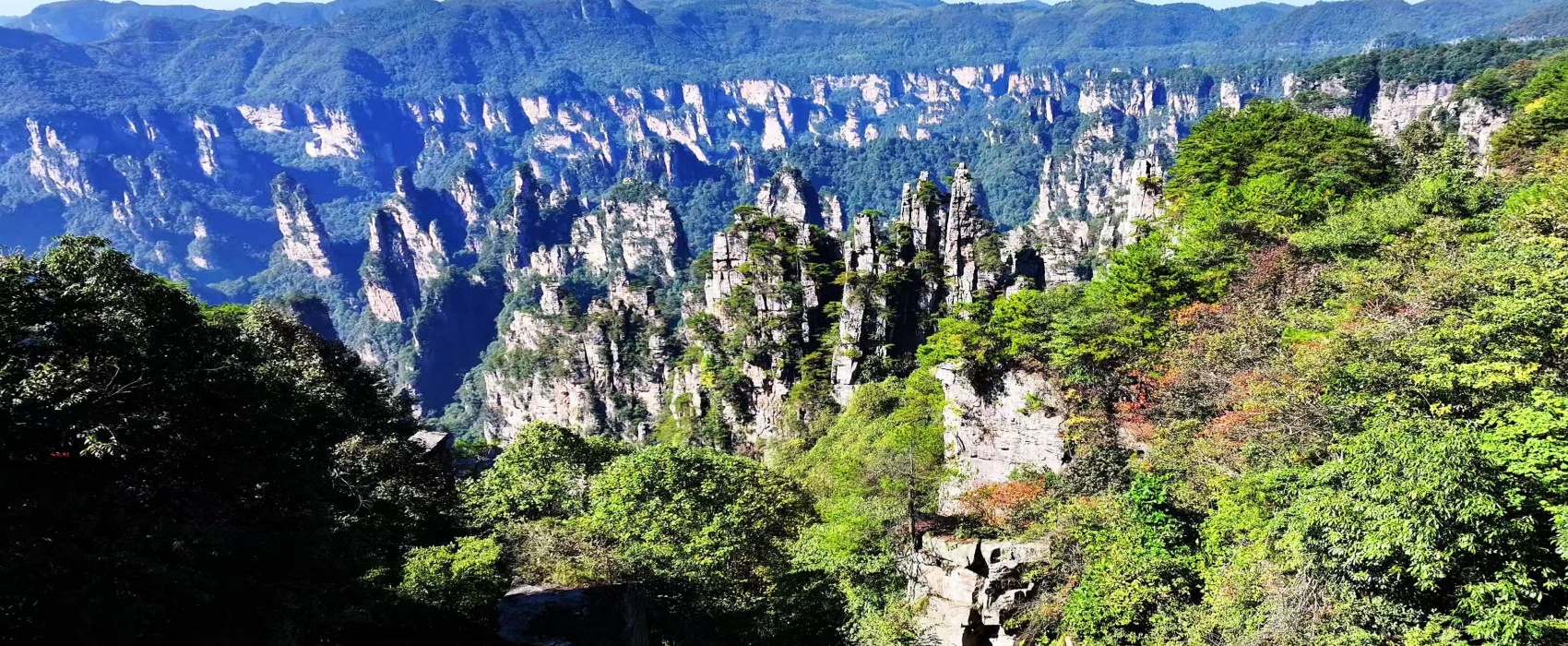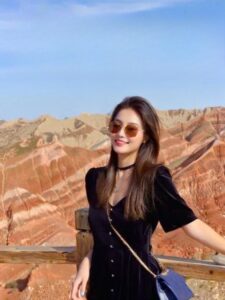Zhangjiajie National Forest Park, also known as the Wulingyuan Scenic Area, is China’s first national forest park. Inscribed on the UNESCO World Heritage List, it evokes diverse descriptions such as majestic, extraordinary, tranquil, exquisite, and untamed. It features over 3,000 unique karst peaks, crystal-clear streams, about 400 animal species, 850 plant species, and a pleasant climate. The park frequently appears in Chinese television dramas and was even featured in the globally renowned film Avatar.
1. Where is Zhangjiajie National Forest Park located?
It is situated 32 kilometers (19 miles) from the city center of Zhangjiajie in Hunan Province, central China.
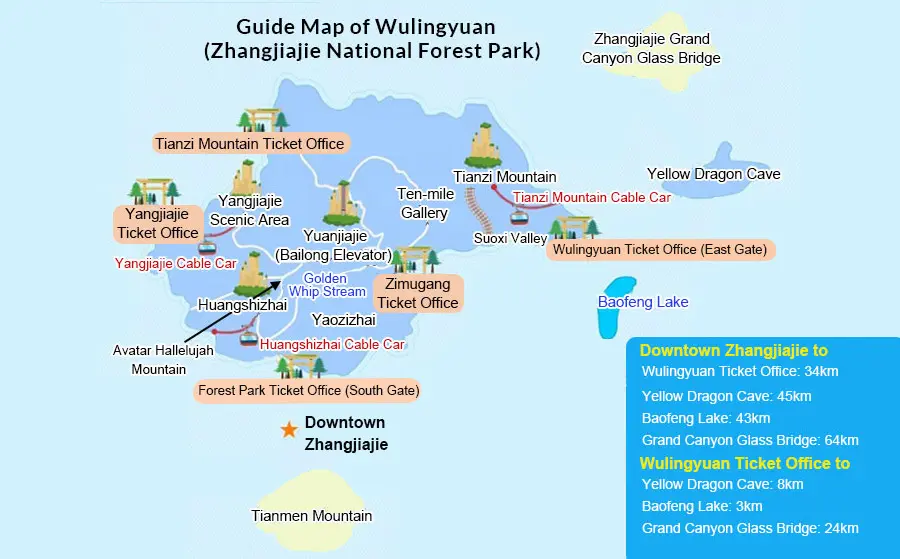
2. Yuanjiajie
Yuanjiajie forms the heart of Zhangjiajie National Forest Park, a natural plateau where towering stone pillars rise from deep valleys, encircled by lofty mountains. These uniquely shaped rocks, dotted with pine trees, create a vivid scene reminiscent of a traditional Chinese ink painting. Among the many peaks, don’t miss Hallelujah Mountain, formerly known as the Pillar of Heaven and Earth. This towering stone column rises 150 meters (490 feet) and served as the inspiration for the floating mountains in the movie Avatar.
The quickest way to reach Yuanjiajie is via the Bailong Elevator. Rising 335 meters (1,100 feet) vertically, it is the world’s highest and fastest outdoor passenger elevator. In just 1.5 minutes, you ascend from the base to the summit of Yuanjiajie, with panoramic views of the natural wonders unfolding through the elevator’s transparent glass walls. Taking the Bailong Elevator saves you significant hiking time—up to two hours.
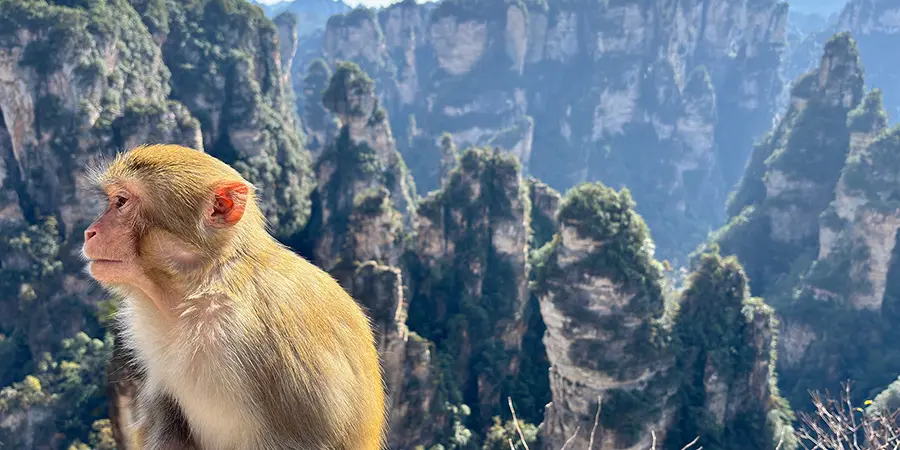
3. Tianzi Mountain
Nestled in the northern part of the forest park lies Tianzi Mountain, renowned as the “King of Peak Forests.” For those seeking natural beauty and an escape from urban clamor, Tianzi Mountain will never disappoint. On its western, eastern, and southern sides, you’ll encounter peaks of diverse forms. Some resemble a hundred soldiers, others a maiden, while some stand like giant pens amidst mist-shrouded, dense forests. Additionally, Tianzi Mountain’s Sky Garden features two picturesque terraced fields, exuding a tranquil rural charm.
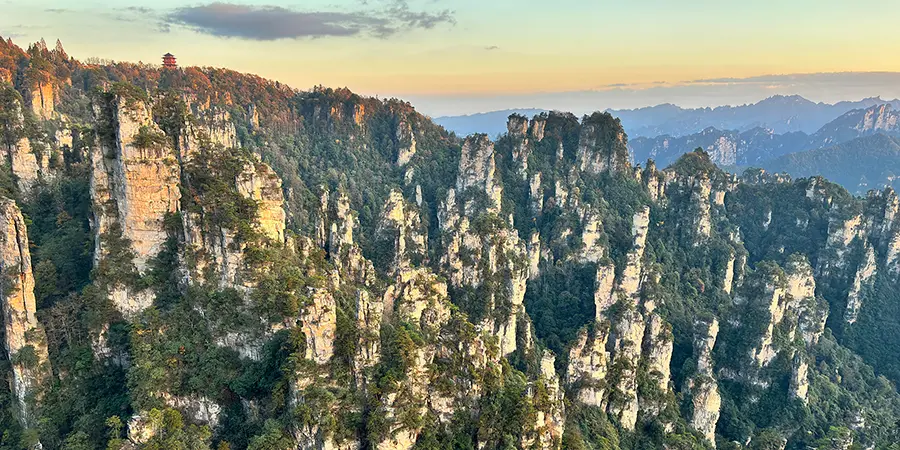
4. Golden Whip Stream
Golden Whip Stream offers the most enchanting scenery within Zhangjiajie National Forest Park. This 5.7-kilometer-long stream derives its name from flowing past Golden Whip Rock, connecting to Pipa Stream in the west and Suoxi Stream in the east. Its crystal-clear waters reveal the layered peaks and ridges, allowing every movement of fish to be seen distinctly. Wildflowers bloom profusely along its banks.
5. Yangjiajie
Yangjiajie is the park’s last-opened scenic area, attracting relatively fewer visitors. Here, dense forests, crystal-clear streams, majestic valleys, and towering peaks create a breathtaking landscape. Highlights include the 80-meter (260-foot) Longquan Waterfall cascading from sheer cliffs, the 10 parallel natural stone walls within Tianbofu, and the ancient Wulong Village perched atop a 300-meter (985-foot) cliff—offering a uniquely immersive travel experience.
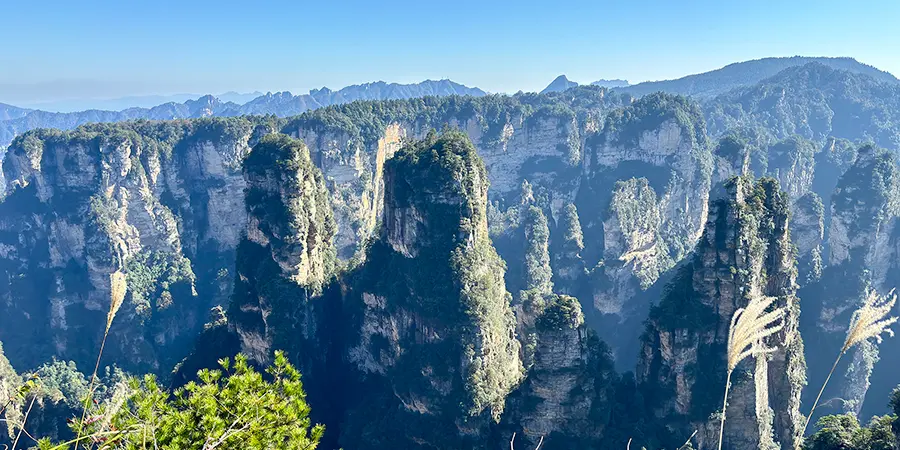
6. Baofeng Lake
The Baofeng Lake Scenic Area is renowned for Baofeng Lake—dubbed “the world’s most spectacular lake”—along with the One-Line-Sky Gorge, Yinhuozhai Village, and its towering peaks and cascading waterfalls. This location has also served as a filming site for numerous Chinese television dramas, including Journey to the West. Cruising across the crystal-clear lake surface promises an experience that will leave you feeling utterly refreshed and rejuvenated.
7. Huanglong Cave
For experiencing classic karst landscapes, Huanglong Cave stands as Zhangjiajie’s premier destination. Hailed as “China’s most beautiful tourist cave,” it features 13 interconnected chambers showcasing countless wonders like towering stone peaks, stalagmites, and stalactites—the tallest reaching 19.2 meters (63 feet). Beyond these marvels, visitors can embark on a boat tour through the cave’s underground river, an experience that surpasses all expectations.
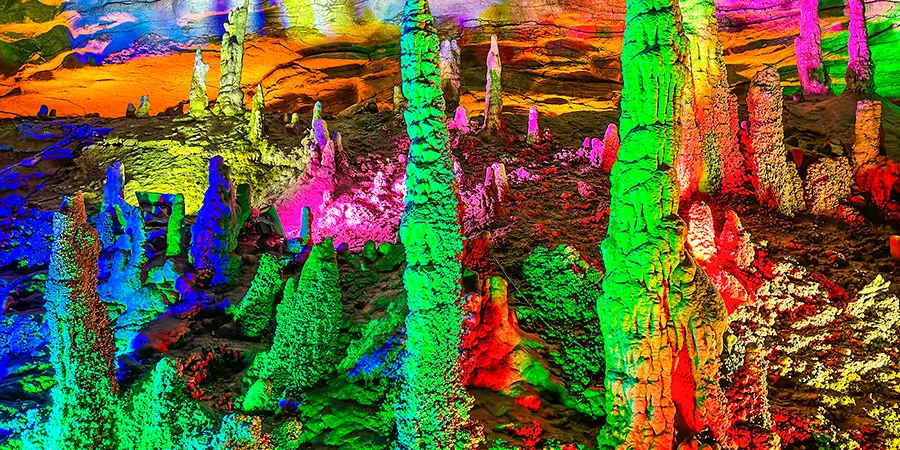
8. Tips for Visiting Zhangjiajie National Forest Park
♥Zhangjiajie National Forest Park has altogether 5 gates, and entering from East Gate or South one is more convenient. Entering from the East Gate, you can reach the summit quickly; while from the South Gate, the highlight attraction – Golden Whip Stream can be seen within minutes.
♥Ticket fare of eco-buses running inside the scenic area is included in the admission fee, so you can take it when needed. However, bends are very common on the mountain roads. So, if you feel carsick easily, remember to take some medicine.
♥ Watch out for the cute but still aggressive monkeys. To prevent the attack from them, it is not advised to wear colorful clothes, carry a bag, or take food out when monkeys are around. A stick or alpenstock is useful to shock the animals away.
♥Due to huge daily temperature difference and changeable weather in the mountainous area, you can take one more overcoat and an umbrella to prevent catching a cold.
♥A pair of comfortable shoes is necessary as you may need to walk and climb a lot.
♥Arrange your travelling time appropriately if you decide to return to city center by coach near the exit. Missing the last coach, you can only take a taxi, which will cost much more.
♥The opening hours of the Park may change due to special weather, so check it in advance.
♥ Please prepare some cash. The network may not be stable in some areas of the Park when online payment doesn’t work.
9. Is it difficult to travel to Zhangjiajie with elderly people or children?
No. For seniors and children who are in good health and capable of moderate physical activity, completing the entire tour is not difficult. The paths and stairs leading to the main attractions are quite easy to navigate. Additionally, the scenic area provides sightseeing electric carts and cable cars.
For more travel information, contact 365 China Travel guides. >>>apply now

